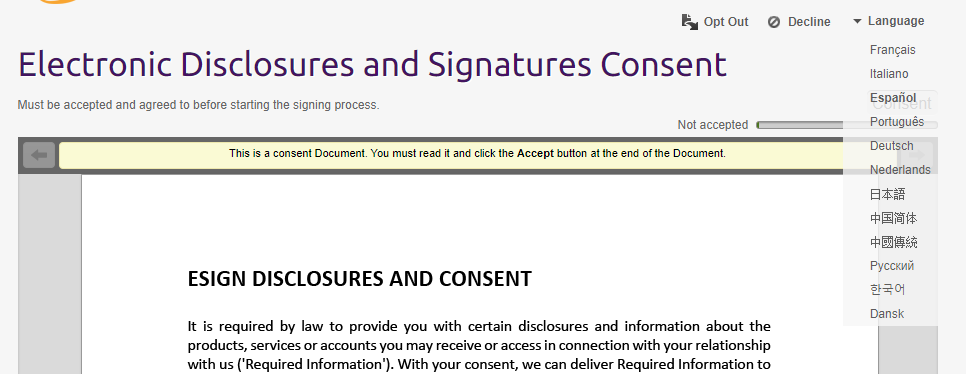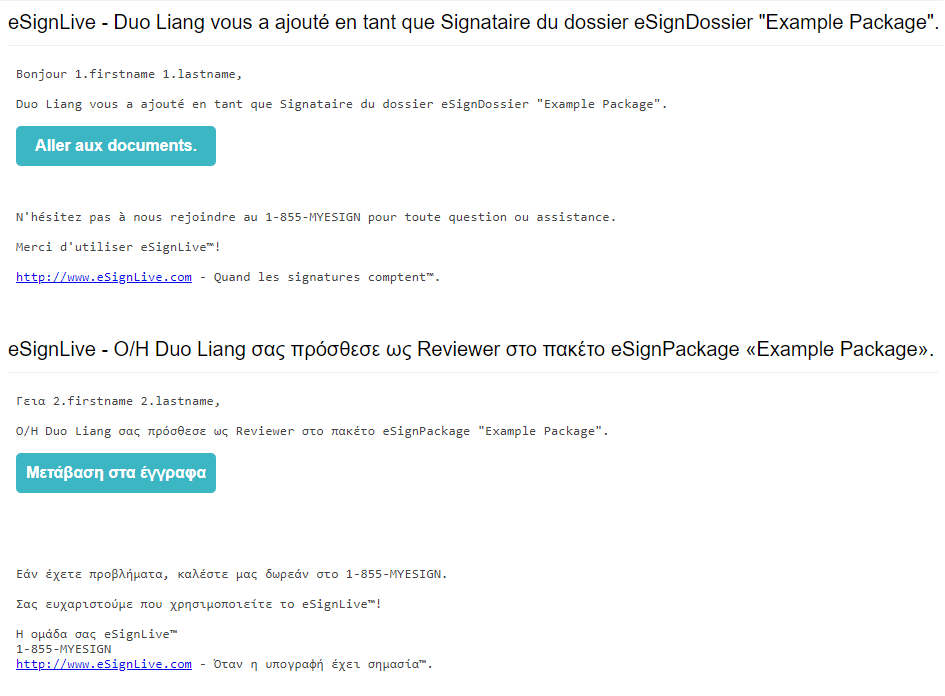OneSpan Sign Release 11.17: New Language Available

Version 11.17 of OneSpan Sign has recently been deployed to the preview environment, and we are exciting to see our OneSpan Sign e-signature solution now speaks one more language, Greek! We have also rebranded our OneSpan Sign, including banners added in UI, as well as a couple of bug fixes. You can find the deployment dates for all our environments on our Trust Center page. Let's get into it.
Modifying the Primary Account Language
The interface in OneSpan Sign has been localized in more than ten languages, including Greek, French, and Spanish, to supplement the existing English interface. You can visit our document site to see all languages we support and the abbreviations for each.
Senders can modify their account’s main language by clicking the “Earth” icon on the top of the Web UI beside the name or by sending an API call to change the account setting.
POST https://sandbox.esignlive.com/api/preferences/{senderId}
{
"language": "el"
}
Notice:
- The abbreviation is case sensitive and (to make one small correction on the document site), zh-CN and zh-TW should be input as such.
- In addition to the main account, you can change your other senders’ language settings by retrieving their API Key and using this key in the request header and their sender ID in the URL.
After that, your Web UI language will change accordingly, including all the instructions and error displays. All your packages’ default language will be set in the same language. However, your signers’ language remains in English, which means when they receive email, their signing ceremony will remain in English regardless of your account’s language setting.
To customize your signer’s languages, refer to following solutions:
First, Signers can process documents using their preferred language by simply clicking the language pull-down list beside other signing ceremony options. By simply choosing a language here, the language of the entire interface will be changed.

Alternatively when you create a package, you can assign different language preferences to each signer as such:
"roles":[
{
"id":"Role1",
"type":"SIGNER",
"signers":[
{
"language":"fr",
"id":"Signer1",
"email":"[email protected]",
"firstName":"1.firstname",
"lastName":"1.lastname"
}
],
"name":"Role1"
},
{
"id":"Role2",
"type":"SIGNER",
"signers":[
{
"language":"el",
"id":"Signer2",
"email":"[email protected]",
"firstName":"2.firstname",
"lastName":"2.lastname"
}
],
"name":"Role2"
}
]
And these are two emails your two signers will receive. If you want to customize your own email notifications in specific language, you can contact our support team by send an email to [email protected]. You can find a complete list of email templates here.

Bug Fixes
A few bugs have also been fixed in this release. When signing documents, the confirm button will no longer be grayed out in the toolbar when you have accepted the last signature. You will no longer need to refresh the page.
Elsewhere, when updating a document in transaction, its name can no longer be empty. A validation rule has been added to ensure this. Lastly, label fields can now be selected or highlighted in the signing ceremony for a better user experience.
If you have any questions regarding this blog or anything else concerning integrating OneSpan Sign into your application, visit the Developer Community Forums. Your feedback matters to us!



